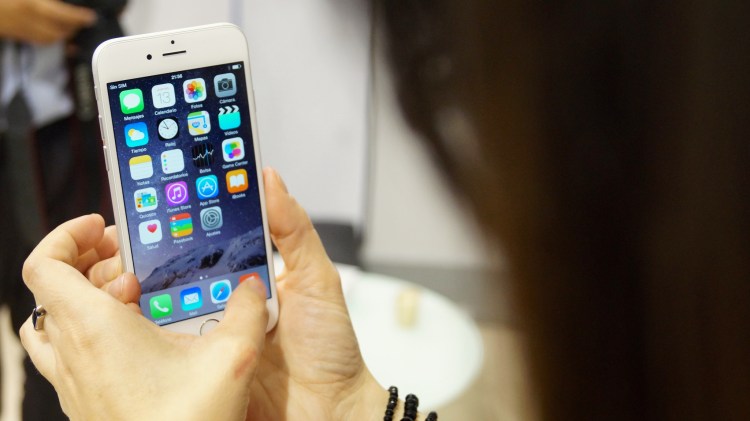If you call my phone — the same one I use for work and life — and I don’t pick up, you’re instructed to “please hang up and send a text.” I’ve ditched voicemail and I see no reason to turn back.
And I’m not the only one. Telecommunications company Vonage says that its voicemail volume dropped 8 percent from July 2011 to July 2012, and another 8 percent from October 2013 to April 2014. Even more interestingly, the same company found a decline of 14% year-to-year in voice mail retrieval, indicating that people are increasingly tuning their messages out. Pew found in 2012 that the under-18 demographic is not even bothering to make voice calls at all.
Perhaps the most resounding death knell yet for voicemail was Coca-Cola’s recent decision to cut voicemail services at its Atlanta headquarters. Now, callers are asked to send a text message or email instead. It’s a decision that was less about eliminating costs — the company estimates it will save less than $100,000 annually with its new no-voicemail policy — and more about adapting to employee habits in a workforce that is increasingly dominated by millennials who are just as accustomed to texting as they are to phone calls.
The annoyances of voicemail became evident way back in April 2009 when the iPhone and other smart devices hit critical mass. In fact, fewer than nine months after the launch of third-party apps on the iPhone, The New York Times published a trend piece called “You’ve Got Voice Mail, But Do You Care?” Citing data from uReach Technologies, a little-known company that is responsible for numerous cell phone carriers’ voicemail infrastructures, the article revealed that over 30 percent of voicemail messages were going unheard for three days or more (presumably, “or more” extends into eternity.)
The Times article was published amid an emergence of new products, including Google Voice, which can transcribe voicemail messages into text. To that end, it quotes trend expert and PSFK founder Piers Fawkes, who said, “Voicemail feels like it was a technology that was created to fill a gap — until something better came along…and now it has.”
In reality, it was voicemail transcription services that filled the gap as we’ve gradually evolved to a post-voicemail world entirely. Google Voice still has millions of users — 3.5 million every day, according to a stat from 2013 — but it has been criticized for not keeping up with the times, product-wise.
One startup that specialized in transcribing voicemails, Yap, has already gone out of business; another, YouMail, seems to still be going strong (in 2012 it announced it had processed two billion calls). Unfortunately, neither Yap nor Google Voice has taken the market by storm in a way that you’d expect from a world that would actually want its voicemails transcribed.
That’s because people are ditching voicemail–transcribed or otherwise–in droves, for good. From a user experience perspective, voicemail is terrible and transcription doesn’t improve it enough.
Voicemail is a representation of a failed connection, a consolation prize for not being able to get someone on the phone. Plus, it’s the only communication medium that you respond to with a different kind of communication — you respond to a text with another text, but respond to a voicemail with a phone call, not another voicemail.
This argument might sound like a quirky rant from a user experience or app design geek (guilty as charged), but it’s actually at the root of why voicemail sucks so much. It doesn’t fit into the realm of asynchronous, flexible communication that we’ve grown used to in the smartphone era. You can reply to emails at 2AM, but you cannot reply to voicemails at 2AM, unless you switch to text (which might be weird at 2AM) or email (but voicemail senders rarely include one).
There are still some industries holding tight to the cultural importance of voicemail — like Hollywood agents who never pry their Bluetooth headsets from their ears, because ignoring a message can mean losing out on a deal. But this cultural practice is changing fast as visual forms of messaging are growing more seamless and more practical.
Apple’s latest Yosemite operating system makes it possible to text from its desktop messaging app, making texting easier for multi-taskers who don’t want to switch screens or feel slowed down by big thumbs on small keyboards. And arguably the biggest technological impediment to going voicemail-free — that you can’t text a landline — is eroding as landlines themselves grow less common. For the first time, a majority of American children are growing up without them.
And if a company as middle-America as Coca-Cola is ditching voicemail, then, well, maybe this whole post-voicemail thing might go mainstream sooner than we may think.
About the author: Ryan Matzner is the Director of Strategy at Fueled, a mobile design and development shop based in NYC and London. He has a decade of online and mobile marketing experience, working with clients such as American Express, Condé Nast, Ideeli, Thrillist, HBO, QuizUp, Barneys, and Gilt Groupe. He can be found on Facebook, Twitter, Linkedin and Google+.
VentureBeat's mission is to be a digital town square for technical decision-makers to gain knowledge about transformative enterprise technology and transact. Learn More

